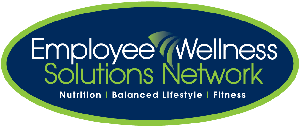
Interview with Meaghan Jansen
|
Meaghan Jansen, MSc. Owner, International Speaker and Corporate Wellness Specialist with Employee Wellness Solutions Network (EWSNetwork) bh in BriefEmployee Wellness Solutions Network (EWSNetwork), based in London, is Canada’s leading employee and corporate wellness provider. Founded in 2003, EWSNetwork provides onsite wellness solutions to organizations across our country. EWSNetwork’s results-based and award-winning wellness programs are strategic to any organization’s needs. Main health risks and cost drivers are addressed through targeted wellness initiatives resulting in better morale, improved energy and productivity, and less time away from work.
www.ewsnetwork.com
|
1. What is the key to a successful wellness program?Hands down, the key to a successful wellness program is senior leadership support. If leadership is behind the program, employees know they are cared for. Any organization can have a successful wellness program, but programs often get better traction in smaller organizations where peer to peer engagement and culture shifts are easier. 2. What is involved in setting up a program?
3. How do you motivate employees?Ensure your program fits the needs and wants of your employees. Extrinsic rewards like free gym memberships or product discounts can lose steam quickly and send the wrong message. Intrinsic rewards, like being less tired or able to move more easily, help people feel the purpose behind the program. When they experience the rewards of a healthier weight, for example, people are more likely to become excited about making changes and adopting a life style that is sustainable for them and their family. And they often share their results with their peers! By focusing on healthy behaviours and providing a variety of wellness initiatives, the “drip effect” eventually takes hold. Even the most reluctant employees become more engaged. 4. How can you measure success?A wellness program is not a “quick fix.” Similarly, there is no quick way to measure success. There are, however, three ways to get a good idea of the effectiveness of your program:
5. What advice do you have for employers?Start with something; something is better than nothing. When you put up a poster, bring in a speaker, provide time for stretching breaks, or serve healthy foods at meetings, that’s “wellness.” Build from anywhere but make sure there is a direct connection between your needs assessment, what your employees want, and their engagement in your wellness activities. Prevention must be part of your message. Employee Assistance Programs (EAPs), common for years, are reactive and can be costly. A wellness program is preventive. Its cost can be minimal. Your return on wellness is going to be based on what you put into your program. Investing in wellness and health promotion absolutely drives returns in several different ways. It may not be immediately obvious, but you will see a return. bh |


